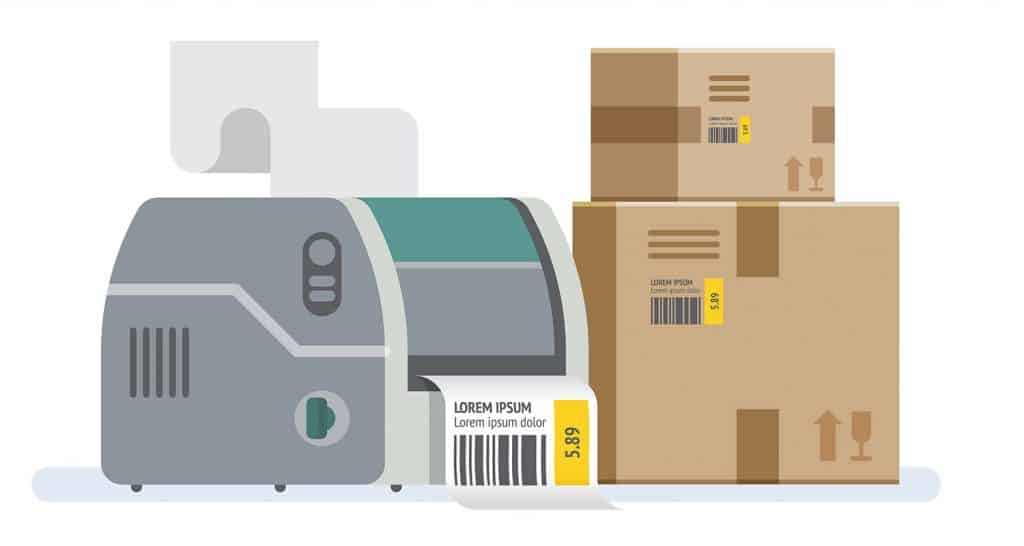As a small business that has entered the arena, you need to build your identity with both your work and deliverables as well as your brand. Digital placement of brand and logos helps but nothing works like the tangible presentation on your product or packaging. The label will not attract customers and establish your brand in the professional industry but also let your product look distinctive amongst others.
However, designing a label is a very intricate task and requires attention to detail more so the printing process needs to be accurate for the packages to meet the criteria your brand is aiming for. When the printing machinery, equipment and process is thoroughly taken care of, you don’t face issue in producing your customised labels. Keep reading to know the common mistakes businesses make in Label Printing, so you can dodge them for easy operations.
1. Select the Right Printer
One of the biggest and most common mistakes companies make is choosing the wrong printer without checking its printing capacity and compatibility with printing your designs. As a thumb rule, don’t use your general office printers to print your labels as the label paper can jam and cause problems to your printer.
Having an industrial label might initially look like added expenses but it saves money, time and effort when printing on bulk. The quality is also drastically better and the finish is much more professional. Zebra Printers are known for their high quality label printers ranging from small mobile printers to High performance desktop printers.
2. Properly Check the Print Resolution
You need to check the resolution properly as it is the graphic quality that your customers will view your brand name and logo in, and the first impression matters! The standard for measuring printing resolution is DPI (dots per linear inch) which has a blurry, pixelated graphic on one end of the spectrum and a finer and detailed illustration on the other.
In order to invest in a specialized label printer that is advanced and equipped with the latest technology, you need to find a high-quality printing resolution based on the DPI for a premium finish of print for your label.
As a thumb rule, the larger the DPI number, the more the dots to build the same graphic, higher resolution and finer quality. The bigger the number, the better. On the other hand, lower DPI would translate into stretched pixels which would look unclear and blurry. You can assess this yourself and choose a higher DPI measurement for the best quality resolution.
3. Match Your Label Roll Measurements with the Printer’s
Although it may sound very obvious, this detail is often overlooked and makes a lot of difference in tackling unnecessary printing problems. The size of your label roll should be compatible with your printer. Many label printers would not be able to print large labels which is why being sure of your device’s capabilities is important.
Once you match the breadth and length of your labels with your equipment then you can skip these troubles, especially for companies printing too large or small label designs.
4. Utilise Your Printer’s Accessories
This is not really one of the mistakes but a lack of true utilization of your label printer and its capabilities. You will miss the opportunity of truly making the most of your device if you do not make use of your printer accessories. If you haven’t already been using them, add them now because they add to a drastic improvement in the work output and overall productivity.
Accessories like label roll rewinders and unwinders along with label rolls that are cycling create a quick workflow that is constant and more structured. These accessories will help you print and put labels faster while maintaining quality. Of course, they are not mandatory but it helps to have your processing made smoother and more effective with efficient tools.
5. Take Into Account the Shape of Your Product
The product shape determines how your printing process would be. Many businesses especially those which are fairly new tend to underestimate the material processing of the product. This usually happens when there is not an accurate estimate of the shape of the product especially when printing labels for bottled deliverables.
The round shape of the product adds complexity both in design and structure which has to be taken care of by the designers and by the business when printing and applying the labels.
Utilizing assistive solutions such as bottle label applicators can ease the process and help assemble the products faster so they can be put together more accurately and quickly. Many different tools like applicators are available for different shapes and sizes which can greatly ease your process and increase your overall output.
The thumb rule remains that before printing, be fully aware of your product shape and its applications in practicality before printing on a mass level. This will help you in preventing setbacks and working with precision.
